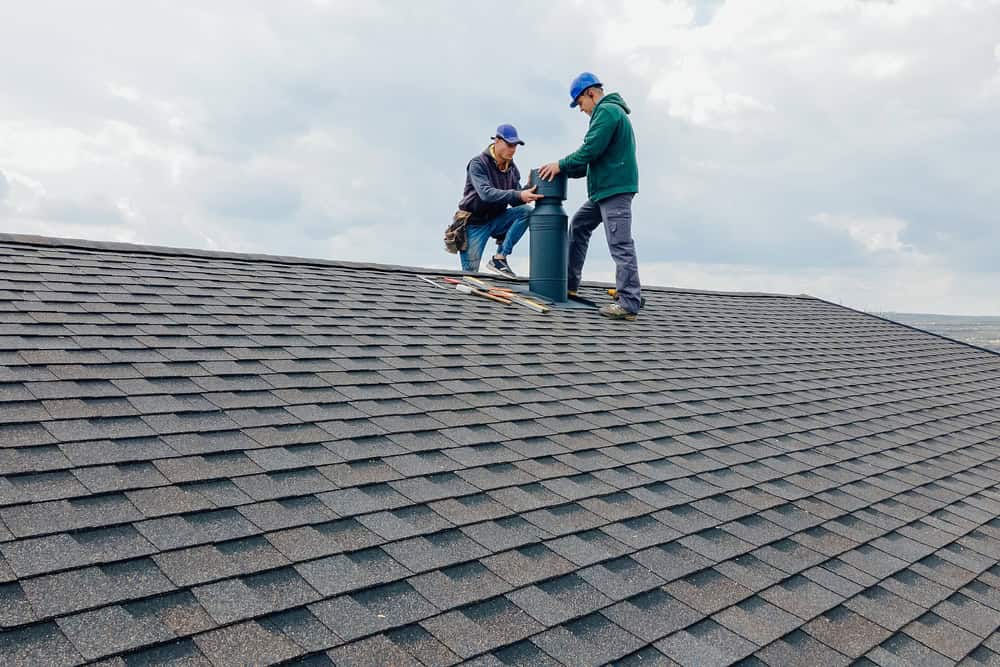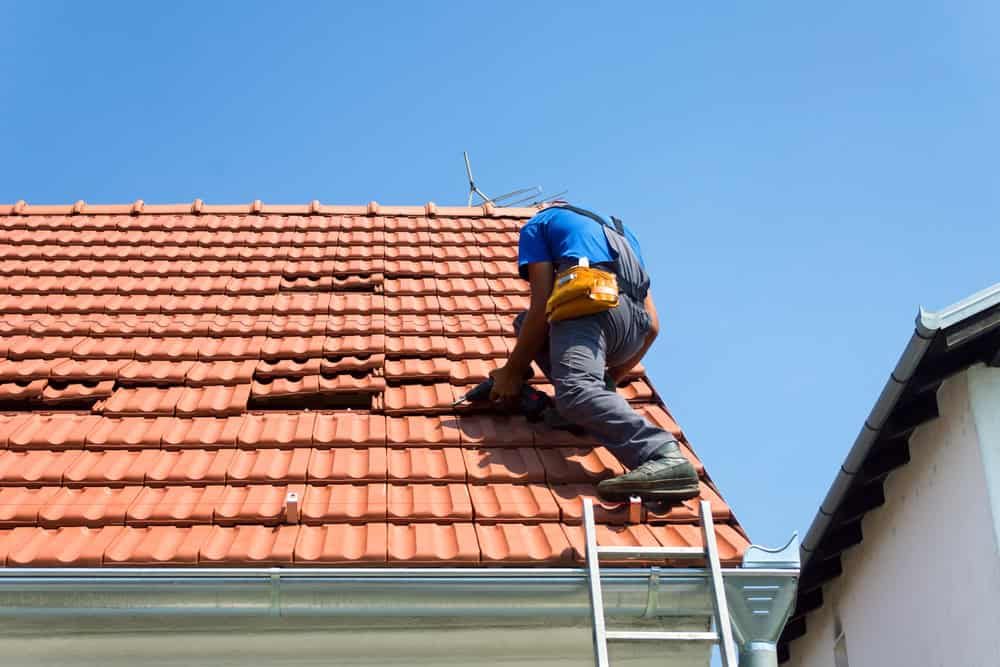Summary:
Why New London County Roof Installation Requires Local Expertise
Connecticut isn’t just another state when it comes to roofing challenges. Your roof needs to handle snow loads that can exceed 30 pounds per square foot, ice dams that form when temperatures fluctuate, and storm systems that bring both wind and hail damage.
Generic installation approaches don’t work here. You need contractors who’ve spent years learning how Connecticut weather affects different roofing materials, how proper ventilation prevents ice dam formation, and which installation techniques actually hold up when tested by nor’easters and summer storms.
That’s why experience in your specific region matters more than a low bid from someone who’s never dealt with Connecticut building codes or weather patterns.
Connecticut Building Codes and Installation Requirements
Connecticut’s building codes are among the strictest in the nation for good reason. The state requires specific underlayment coverage that exceeds most manufacturer guidelines, fire-resistant materials that meet Class A or B ratings, and installation methods designed to handle both snow loads and wind uplift.
These aren’t just bureaucratic requirements. They’re based on decades of data about what actually works in Connecticut’s climate. When contractors cut corners on code compliance, you’re the one who pays the price when your roof fails during the next major storm.
Professional installation means following Connecticut State Building Code requirements exactly, not finding ways around them. This includes proper flashing installation around chimneys and skylights, adequate ventilation to prevent ice dams, and using materials rated for Connecticut’s specific weather challenges.
We pull proper permits, schedule required inspections, and provide documentation that your installation meets all local requirements. This isn’t just about legal compliance—it’s about ensuring your roof performs when you need it most and maintaining your homeowner’s insurance coverage.
Material Selection for Connecticut Weather Conditions
Not every roofing material handles Connecticut weather equally well. Asphalt shingles remain popular because they offer good performance at reasonable cost, but the quality varies dramatically between basic three-tab shingles and architectural shingles designed for impact resistance.
Metal roofing has gained popularity among Connecticut homeowners because it sheds snow effectively and can last 50+ years when properly installed. However, metal requires specific installation techniques to prevent thermal expansion issues and ensure proper drainage during heavy rain events.
Impact-resistant shingles rated Class 4 provide extra protection against hail damage, which has become more common in Connecticut storms. These materials cost more upfront but often qualify for insurance discounts and provide better long-term value when you factor in reduced repair costs.
The key is matching material selection to your specific situation. A coastal home faces different challenges than one in inland New London County. Homes with complex rooflines need different approaches than simple gable roofs. We evaluate these factors before recommending materials, not after we’ve already committed to a specific approach.
Energy efficiency also matters in Connecticut’s climate. Cool roof materials can reduce summer cooling costs, while proper insulation coordination prevents ice dam formation. These considerations affect material selection and installation methods in ways that impact both immediate performance and long-term costs.
Professional Installation Process and Quality Standards
Quality roof installation follows specific sequences and standards that protect both the work and your property. It starts with proper preparation, including protecting landscaping and ensuring safe material storage, then progresses through systematic removal, deck inspection, and installation phases.
Each step matters. Rushing through tear-off can damage roof decking. Skipping deck inspection means missing structural issues that will cause problems later. Poor flashing installation around penetrations creates leak points that may not show up for months or years.
Professional installation also means managing the project timeline realistically and communicating clearly about progress, potential delays, and any issues discovered during the work.
What to Expect During Professional Roof Installation
Professional roof installation begins before our crew arrives at your property. We provide clear timelines, explain how we’ll protect your landscaping and property, and coordinate material delivery to minimize disruption to your daily routine.
The actual installation process typically takes 1-3 days for most residential roofs, depending on size, complexity, and weather conditions. Day one usually involves tear-off and deck inspection, with new underlayment installation if conditions permit. Day two focuses on shingle installation, while day three handles final details like ridge caps, flashing, and cleanup.
Throughout the process, we maintain organized job sites, protect your property with tarps and magnetic nail sweepers, and communicate about any issues or changes that arise. We don’t disappear for days at a time or leave your roof partially protected overnight unless weather absolutely requires it.
We also handle permit coordination, schedule required inspections, and provide documentation of warranty coverage for both materials and labor. We explain maintenance requirements and provide contact information for future service needs.
The cleanup process is just as important as the installation itself. Our crews remove all debris, check gutters for nails or material fragments, and use magnetic tools to collect any metal debris from driveways and landscaping. Your property should look better after completion than it did before work began.
Warranty Coverage and Long-Term Performance
Warranty coverage separates professional installation from fly-by-night operations. We provide both labor warranties on our installation work and help you understand manufacturer warranties on materials. These aren’t just marketing promises—they’re backed by insurance and business practices that ensure we’ll be available to honor warranty commitments.
Labor warranties should cover installation defects for at least 5-10 years, while material warranties vary based on the specific products used. However, warranty coverage only matters if the contractor remains in business and honors their commitments. That’s why choosing established, local contractors with proven track records matters more than finding the lowest bid.
Understanding warranty requirements also helps protect your coverage. Most warranties require regular maintenance and may be voided by unauthorized repairs or modifications. We explain these requirements clearly and often provide maintenance services to help ensure warranty compliance.
Documentation matters too. Keep all warranty paperwork, permit records, and inspection reports in a safe place. This documentation proves proper installation if you ever need to file warranty claims or when you sell your home. We provide complete documentation packages, not just verbal promises about coverage.
Long-term performance depends on both quality installation and appropriate maintenance. Even the best roof installation requires periodic inspection and minor maintenance to achieve its full lifespan. We often provide maintenance services or can recommend qualified service providers for ongoing care.
Choosing the Right Roof Installation Contractor in New London County
Quality roof installation protects your home and your investment for decades when done right the first time. The difference between professional installation and shortcuts becomes clear during the first major storm or when you need warranty service years later.
Look for contractors with proven local experience, proper licensing and insurance, and the expertise to handle Connecticut’s specific challenges. Don’t base decisions solely on price—focus on value, which includes quality materials, professional installation, comprehensive warranties, and long-term reliability.
When you’re ready to move forward with professional roof installation that’s built to last, Sullivan Contracting brings over 20 years of experience protecting New London County homes with quality craftsmanship and reliable service.




